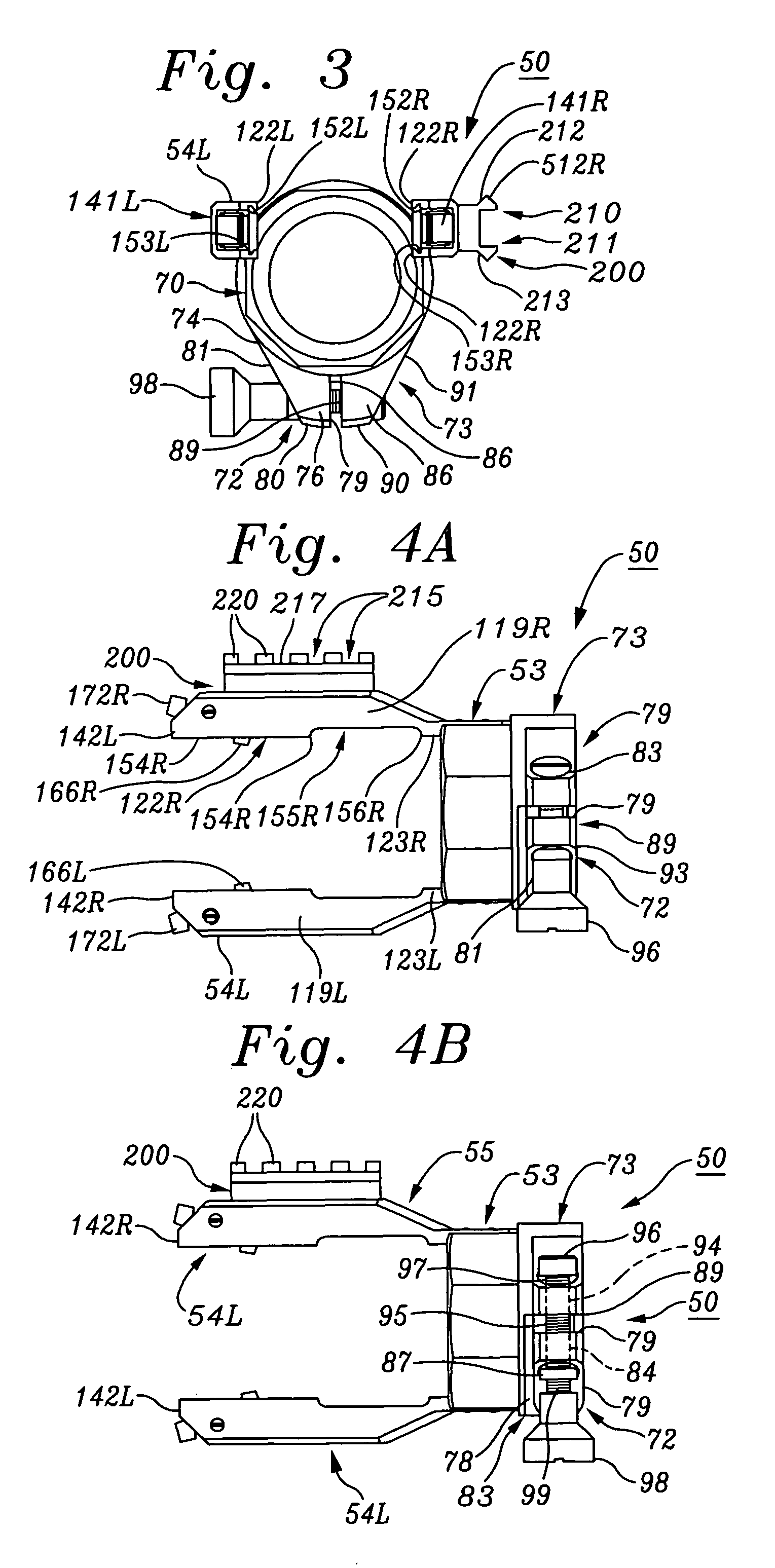Clamping device for coaxially coupling optical devices
a coaxial coupling and optical device technology, applied in the direction of scaffold accessories, light support devices, washstands, etc., can solve the problems of limitation of the foregoing parameters, the use of conventional telescopic riflescopes in low-light level conditions, and the inability to use typical night vision riflescopes in dayligh
- Summary
- Abstract
- Description
- Claims
- Application Information
AI Technical Summary
Benefits of technology
Problems solved by technology
Method used
Image
Examples
Embodiment Construction
[0096]FIGS. 1-17 illustrate a basic, double-arm embodiment of a clamping device for coaxially coupling optical viewing devices to riflescopes, according to the present invention. FIGS. 18-29 illustrate a single-arm, swing-away embodiment of the invention. FIGS. 30-32 illustrate a modification of the swing-away embodiment of the invention.
[0097]Referring first to FIGS. 1-7, a basic embodiment 50 of a clamping device or coupler for coaxially coupling optical devices to riflescopes according to the present invention may be seen to include a split front mounting collar 51 which is adapted to coaxially receive the rear, ocular or eyepiece tube of a riflescope, and a front clamp assembly 52A which secures the eyepiece tube within a split collar 61. Coupler 50 also includes a rear tubular mounting ring 53 which protrudes rearwardly from and is coaxially aligned with front mounting collar 51 and front clamp assembly 52A. Rear tubular mounting ring 53 is adapted to coaxially receive the tubu...
PUM
 Login to View More
Login to View More Abstract
Description
Claims
Application Information
 Login to View More
Login to View More - R&D
- Intellectual Property
- Life Sciences
- Materials
- Tech Scout
- Unparalleled Data Quality
- Higher Quality Content
- 60% Fewer Hallucinations
Browse by: Latest US Patents, China's latest patents, Technical Efficacy Thesaurus, Application Domain, Technology Topic, Popular Technical Reports.
© 2025 PatSnap. All rights reserved.Legal|Privacy policy|Modern Slavery Act Transparency Statement|Sitemap|About US| Contact US: help@patsnap.com



